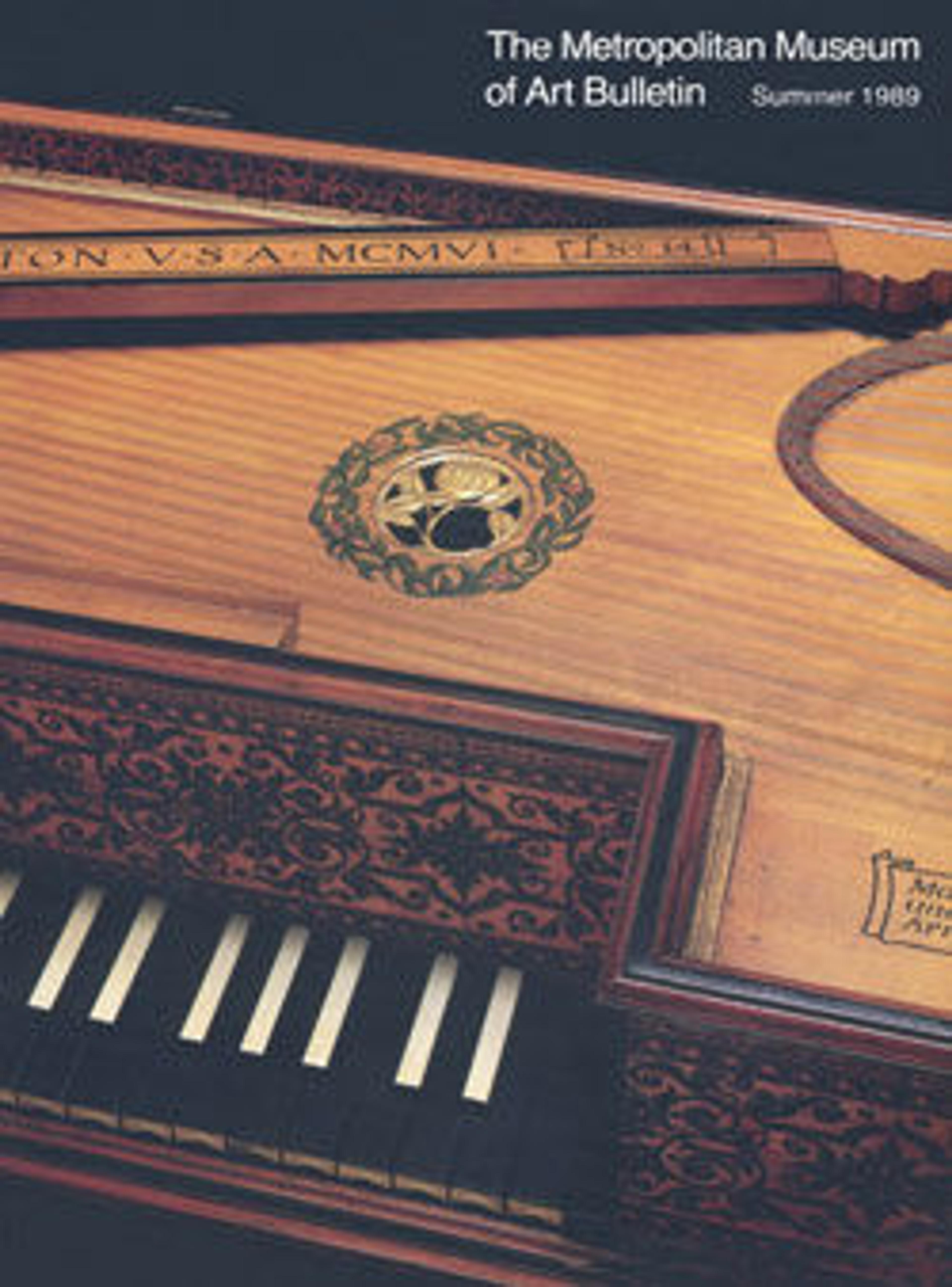Upright Harp Piano
The short-lived Euphonicon (from Greek, "sweet-toned") was patented by John Stewart in 1841 and manufactured under his supervision. Hand-painted designs and gilded brackets soften the industrial aspect of the solid iron frame. The Macassar ebony case encloses 3 soundboxes that replace a normal sound board. Decorated on all sides, the Euphonicon can be free-standing. Delicate scrollwork and carving belie its great weight. Similar harp-pianos (so called because of the exposed strings) were popular in America around 1860.
Technical description: Base of mahogany painted green and decorated with gilt bands; gilt decoration on exposed areas of sound chamber; gilt metal brackets and finials; painted and gilt iron brackets below keyboard integral with vertical frame; rolls on casters; patented tuning mechanism employing screws; fretwork music rack, base front panels, and sound chamber rear panels; ivory naturals, ebony accidentals, compass CC-a4 (82 keys), 2 pedals, left operates una corda, right lifts dampers, the top 23 notes lack dampers and vibrate freely and ring sympathetically when the instrument is played. Tape-check upright action with trackers, crank dampers with stickers and trackers; instead of soundboard, bridges cross three hollow chambers located behind the strings and extending halfway up the vertical frame; double strung throughout, bottom 18 strings would
Technical description: Base of mahogany painted green and decorated with gilt bands; gilt decoration on exposed areas of sound chamber; gilt metal brackets and finials; painted and gilt iron brackets below keyboard integral with vertical frame; rolls on casters; patented tuning mechanism employing screws; fretwork music rack, base front panels, and sound chamber rear panels; ivory naturals, ebony accidentals, compass CC-a4 (82 keys), 2 pedals, left operates una corda, right lifts dampers, the top 23 notes lack dampers and vibrate freely and ring sympathetically when the instrument is played. Tape-check upright action with trackers, crank dampers with stickers and trackers; instead of soundboard, bridges cross three hollow chambers located behind the strings and extending halfway up the vertical frame; double strung throughout, bottom 18 strings would
Artwork Details
- Title: Upright Harp Piano
- Artist: F. Beale & Co.
- Date: 1843
- Geography: London, England, United Kingdom
- Culture: British
- Medium: Mahogany, paint, gilding, cast iron, paint, silk, ivory, ebony, glaze
- Dimensions: 142cm x 76cm x 195cm
- Classification: Chordophone-Zither-struck-piano
- Credit Line: Gift of Mrs. Greenfield Sluder, 1944
- Object Number: 44.58
- Curatorial Department: Musical Instruments
More Artwork
Research Resources
The Met provides unparalleled resources for research and welcomes an international community of students and scholars. The Met's Open Access API is where creators and researchers can connect to the The Met collection. Open Access data and public domain images are available for unrestricted commercial and noncommercial use without permission or fee.
To request images under copyright and other restrictions, please use this Image Request form.
Feedback
We continue to research and examine historical and cultural context for objects in The Met collection. If you have comments or questions about this object record, please contact us using the form below. The Museum looks forward to receiving your comments.
